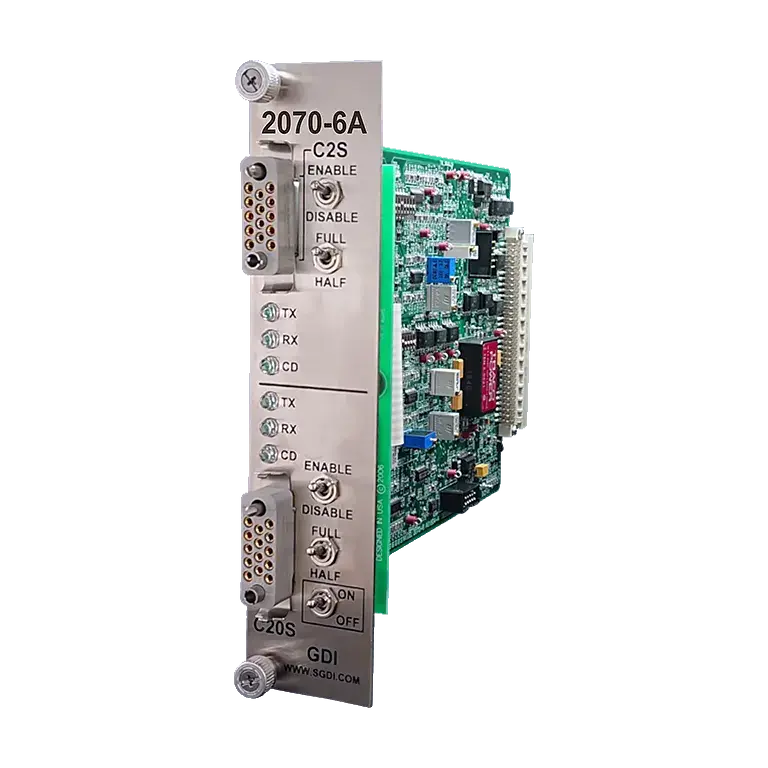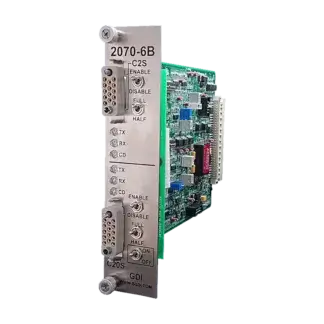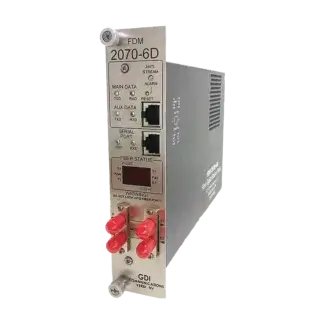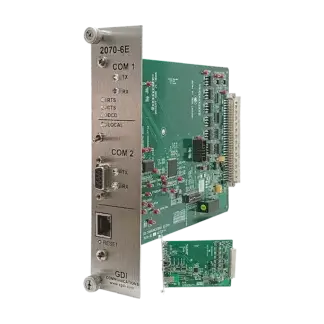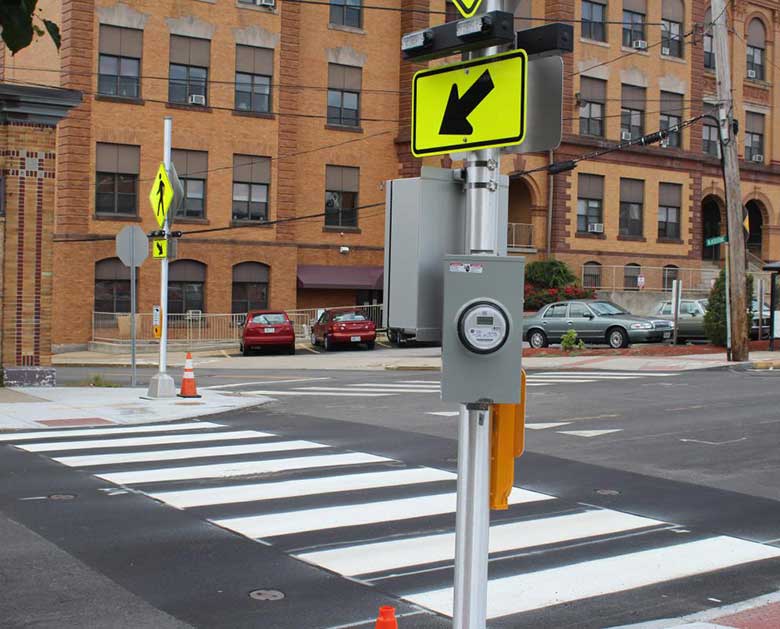Description
Applications
The 2070-6A Modem facilitates the exchange of data related to traffic signal control between a 2070 Controller and various components in the traffic management system. The 2070 Controller, a widely utilized type of traffic signal controller overseeing traffic light operations, relies on modems like the 2070-6A for seamless communication.
With its dual FSK capabilities, the 2070-6A Modem assumes a pivotal role in ensuring smooth communication across traffic signal controllers and the broader traffic management network. This harmonious communication is essential to maintain the smooth and safe flow of traffic. The 2070 Controller depends on modems like the 2070-6A to transmit and receive crucial data, encompassing real-time traffic conditions, pedestrian crossings, signal timing adjustments, and other pertinent information to optimize traffic signal functionality.
The dual FSK modulation employed by the 2070-6A Modem, utilizing Frequency Shift Keying, entails encoding information in signal frequency. This dual FSK approach, with two distinct frequencies for data transmission, provides potential benefits such as enhanced efficiency and reliability in communication. This redundancy and increased data throughput are especially valuable in challenging conditions, ensuring robust communication that is vital for the overall efficiency and safety of the traffic system.
Features
- Data Rate: 0 – 1200 bps
- Built with surface mount parts for increased reliability
- Dual FSK modulation for enhanced efficiency and reliability
- Easy installation, plugs into the A1 to A5 slots of a 2070 Controller
General Description
The 2070-6A Modem is a dual FSK Modem for the 2070 Controller, which utilizes the latest surface mount technology. The 2070-6A meets or exceeds the CALTRANS Transportation Electrical Equipment Specifications (TEES) of March 12, 2009 and applicable addendum. This Modem plugs into the A1 to A5 slots of the 2070 Controller and is held in place with two thumbscrews. The front panel has two M14 type connectors that are identical to the C2S and C20S connectors on the 170 Controllers. Therefore, cables made for the 300 series cabinets will work with the 2070-6A.
The 2070-6A also converts the EIA-485 signals for SP1/2 or SP3/4 on the back plane of the 2070 to EIA-232. These signals are available in the M14 (C2 and C20) connectors on the front panel. When the Modem sections are not being used a front panel switch can turn off each section of the Modem individually so that it doesn’t interfere with the EIA-232 communication.
To use the C2S/C20S connectors for EIA-232, switch the associated front Panel Switch to the “DISABLE” position. The FSK MODEM is enabled in the “ENABLE” position.
FSK Full Duplex or Half Duplex can be set for each channel.
A 5th switch powers down the entire Module so that it can be inserted or taken out while the power to the 2070 is on. This prevents any of the parts on the 2070-6A Modem or the 2070 Controller from being harmed during insertion or being unplugged.
Six LEDs are also located on the front panel, 3 for each channel. They include Transmit Data (TX), Receive Data (RX), and Carrier Detect (CD).
All of the RS-232/FSK signals in the C2S and C20S connectors are optically isolated from the controller signals. The 5V supply and Ground in the C2S and C20S connectors are also isolated and individually fused at 200ma with a solid state PTC to protect the 2070’s internal power supply.
The 2070-6A Module is built with surface mount parts for increased reliability and to reduce the parts count. The use of all surface mount parts has allowed us to put all of the parts on a single PC Board. The digital section and first modem are on the top side of the board. The second modem is on the back of the PC Board. Power and Ground planes prevent crosstalk and isolate the two modems from each other.
The 2070-6A also has an anti-streaming option that can be selected with a dipswitch on the PC Board. Anti-steaming will prevent a remote site from monopolizing the communication path in a multi-drop configuration. Anti-streaming is not normally used on the Master end.
Separate switches also allow the timings on the handshake and modem control signals to be cut in half for faster communications.
Model Numbers:
- 2070-6A: with internal isolation transformer
- 2070-6A-1LA: without isolation transformer

